This article appeared in The Town Courier.
Six photographers share their artistic “Point of View” in the aptly-named exhibit that runs through Aug. 7 at the Arts Barn. Mary Weiss-Waldhorn, the City of Gaithersburg’s art curator, said that five “strong” artists–Karen Cohen, Shanelle Jacobs, Michael Kuchinsky, Thomas Marchessault and Marleen Van den Neste–responded to the city’s call, and to make the group an even half-dozen, she invited Frederick photographer Marc Weinberg.
Weinberg began taking photos in 1956. “It fascinated me (as an 8-year-old), and it still does,” he said. He proceeded to teach himself “photographic theory and lighting because cameras, at that time, were fully manual.” The learning, he said, is “a never-ending process.”
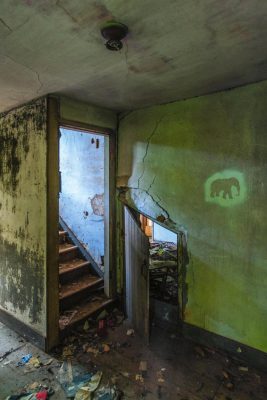
Now the retired federal government lawyer categorizes his stake in photography as “part-time, but big-time part-time.” That is no exaggeration: His commitments have included freelancing for Frederick Magazine, teaching at Frederick Community College, Griffin Arts Center and Shepherd University and serving as president of the Artists Gallery of Frederick.
Weinberg shoots images of “abstract subject matter, capturing subjects others look past. I enjoy shooting natural abstracts and abandoned human structures and machines. I also love capturing all the natural beauty around me.” He shoots manually, believing that “the best way to shoot is to shoot like we did prior to all the digital bells and whistles,” he said. “All the traditional rules and practices apply” to digital photography, “with just a little adjusting here and there as necessary.”
Complete control of the process is key. “I abhor automatic,” Weinberg said. “The camera is only a tool. It’s too stupid to make important artistic decisions relating to sensor speed, aperture and shutter speed.” He post-processes his images using computer programs and does his own printing. “It’s an art that can’t be left to others. My photographs ARE photographs. No collages. No graphic arts. I love the purity of photography.”
Retired federal government economist Thomas Marchessault “started out in black and white in the film days, then did more color and recently resumed “playing around more with black and white.” The Kentlands resident said he is “principally self-taught by observation, reading and practice,” but early on, “found time to take evening courses in photography and practice darkroom skills to develop film and make prints.”
During the decade since his retirement, Marchessault has devoted “more attention and time to making photographs, finding satisfaction in the creativity the camera gives me to capture moments and images and preserve them in pixels. My camera is always at hand and my eye is always watching for the next opportunity to capture an interesting image.”
His style, he added, “tends more toward a literal view of the world with only occasional forays into the abstract. I am interested in simple, clean images as opposed to complex images–although there are some exceptions in this collection.”
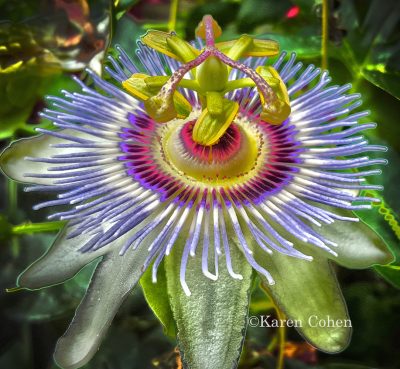
After earning certification at New York City’s Germain School of Photography, Karen Cohen worked variously as portrait, wedding and rock and roll photographer as well as photojournalist and color printer both in her native New Jersey as well as her current D.C. and rural West Virginia homes.
She started out using 35mm Nikon cameras and developing film in her own darkroom, later “reluctantly switching to digital images” and realizing “I absolutely love the process and don’t miss the chemical processing at all. Everything I learned in the darkroom, I can now achieve in Photoshop by manipulating as I did before: lightening, darkening, blocking areas and sandwiching images.”
Cohen works “exclusively in color because it has the punch that I love and it is real life. I used to love the contrast of black-and-white prints for dramatic effects, but I now feel I can capture the same drama in color.” Her work, she said, was “juried into 30 exhibits last year alone and continues on that path this year,” and a solo exhibit featuring her rock and roll images is scheduled for 2017-2018.
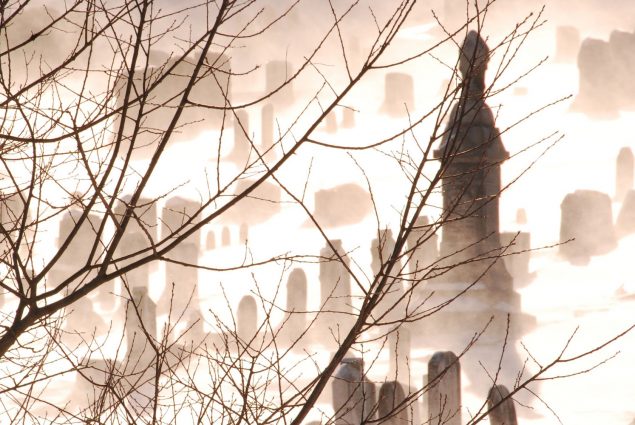
Michael Kuchinsky’s parents gave him a rudimentary box camera before a family vacation during his adolescence. Since then, his training in the art, he said, has consisted of “experience, trial and error, listening to others and experimentation.”
The retired professor of international politics and semi-retired Lutheran clergyman said photography “has always been a creative hobby, even a form of personal therapy.” He uses a “simple 4-1/2-year-old Nikon” to take both color and black-and-white images “that tell stories, or raise questions, or display a concept, or promote a certain tension, or contain an element of surprise,” he said.
Kuchinsky’s style has evolved. “My attention has been moving towards an increased level of abstraction such that the context comes into question, micro-subjects, asymmetric compositions, different uses of light, patterns, an interest in bringing forward a spiritual dimension of an image, and a sincere respect for the drama of monochrome photography.”
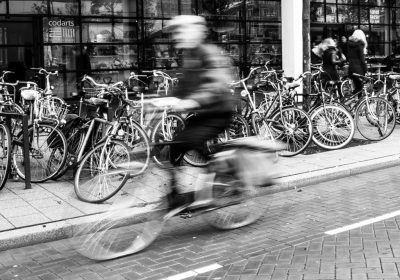
Former lawyer Marleen Van den Neste of Gaithersburg moved to the United States about 25 years ago. In 2010, she began studying photography at Montgomery College, switching careers to full-time photojournalism three years later. She described her style as eclectic, and prefers producing candid-style black-and-white photographs.
The photos in this exhibit, she noted, “are not really representative of my style.” Instead, they are “part of a series on the Netherlands where I grew up and where my heart is!” Her more characteristic street photography work—“with a focus on being an outsider”—is currently on view at Glenview Mansion in Rockville.
Shanelle Jacobs is relatively new to photography, having picked up a point-and-shoot camera and a photography book in 2014. The hobby turned into a full-time endeavor for the Gaithersburg resident who works with two Canons, 40D and 1200D, mostly in color. Her preference is for “in the moment shots,” and her efforts to “get better at editing and working outside my comfort zone have made my work evolve into more dramatic and artistic pieces,” she said.
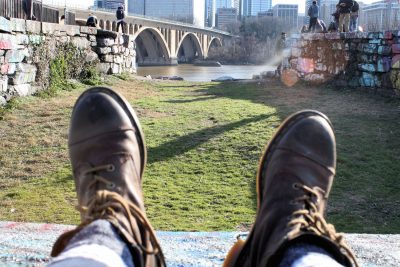
Jacobs is proudest of having photographed the singer-songwriter Solange and getting her work into three art exhibits this year. She is working on “Stay Alive,” a book of photos and stories about suicide and mental illness.
Weinberg’s words echo the great satisfaction these six photographers derive in sharing their points of view: “I love knowing that someone purchasing my images ‘gets’ them,” he said. “It humbles me to know that they will be part of their lives, and, I hope, the lives of their family members for years to come.”
Arts on the Green presents “Point of View” through Aug. 7 at the Arts Barn Gallery, 311 Kent Square Road, Gaithersburg. Hours are 10 a.m. to 5 p.m. weekdays, and 1:30 to 5 p.m. Saturdays. An artists reception is set for 7 to 8:30 p.m. on Thursday, July 20. Call 301-258-6394 or visit www.gaithersburgmd.gov. View this exhibit on CultureSpotMC here.